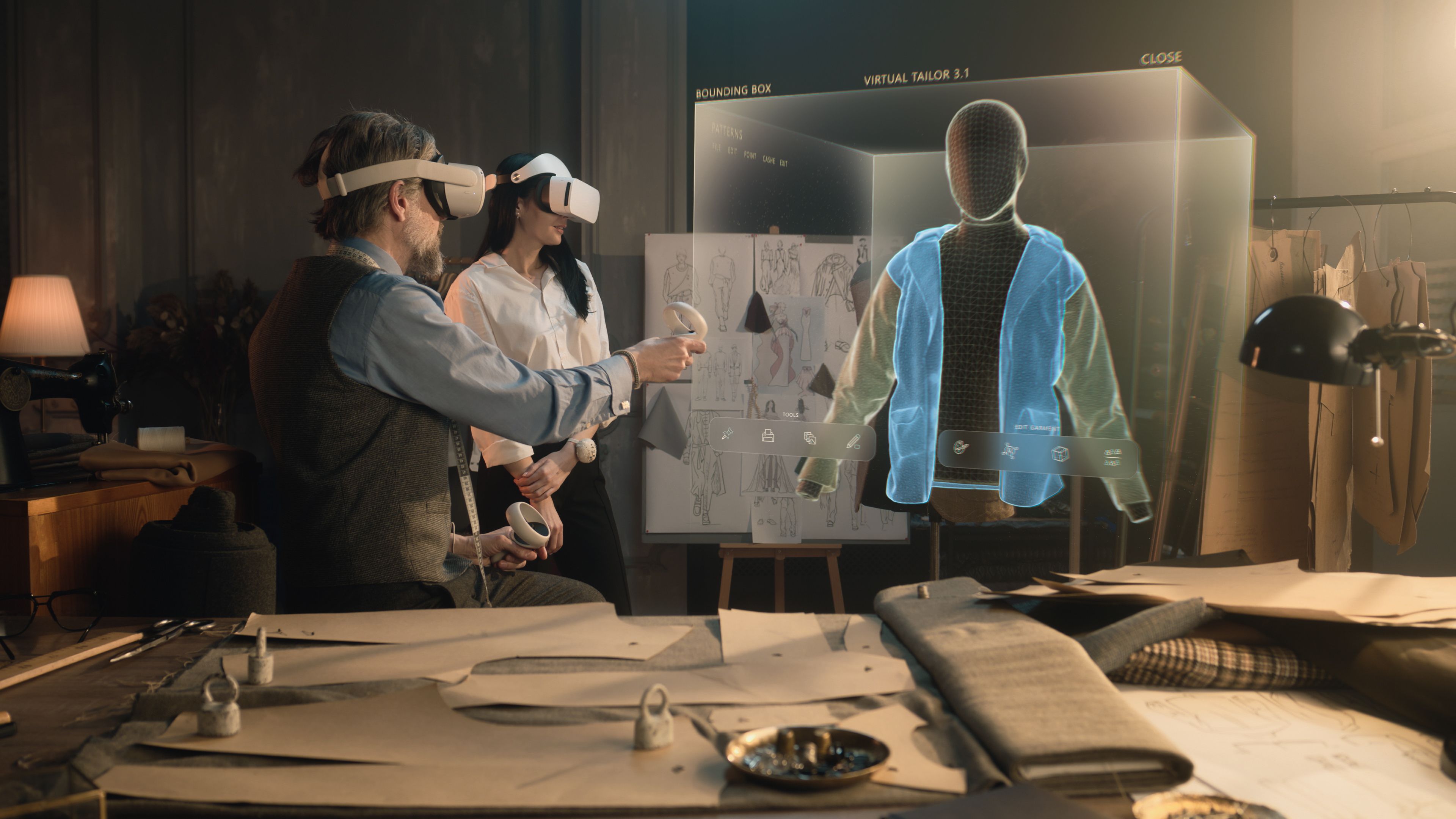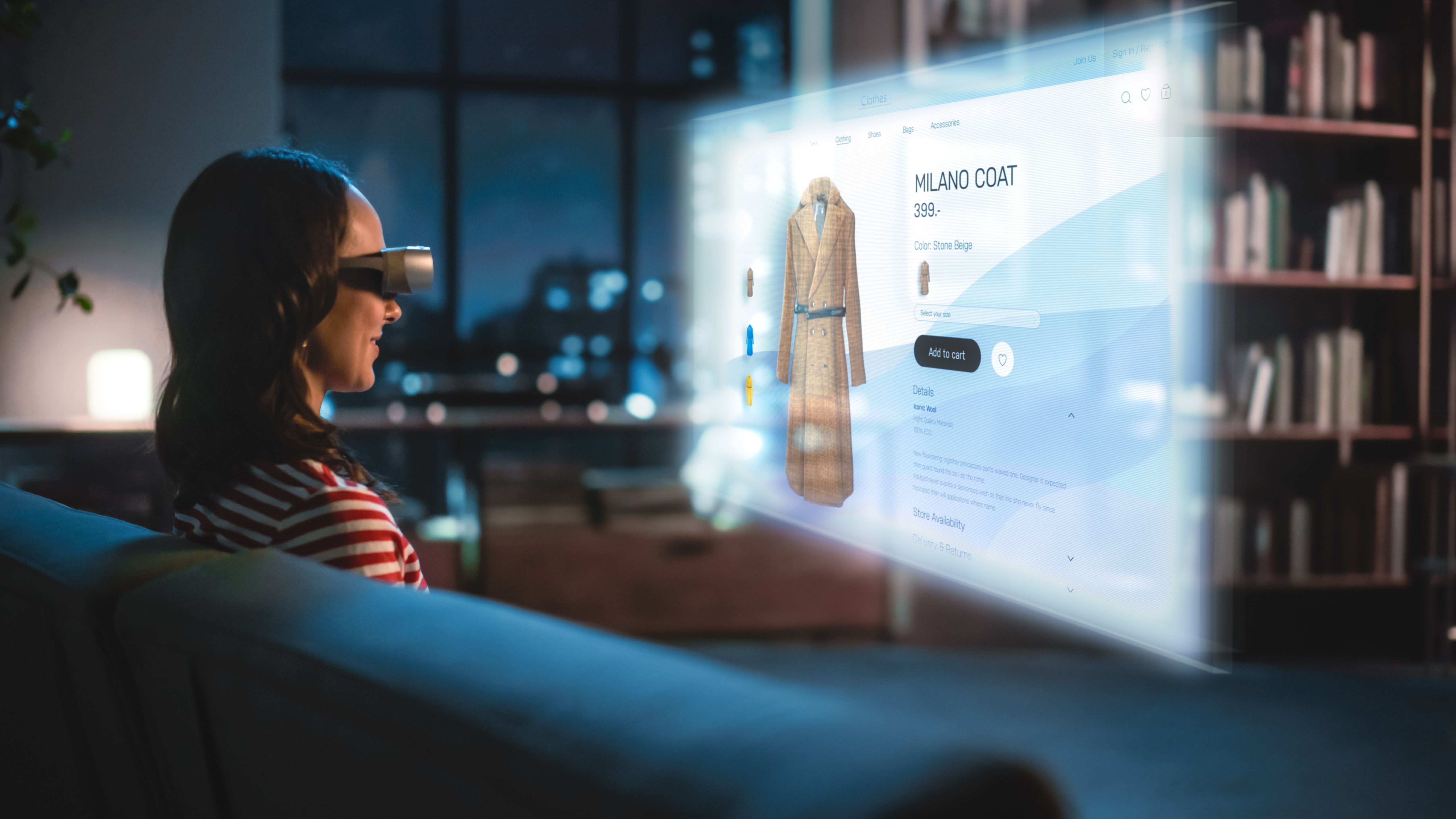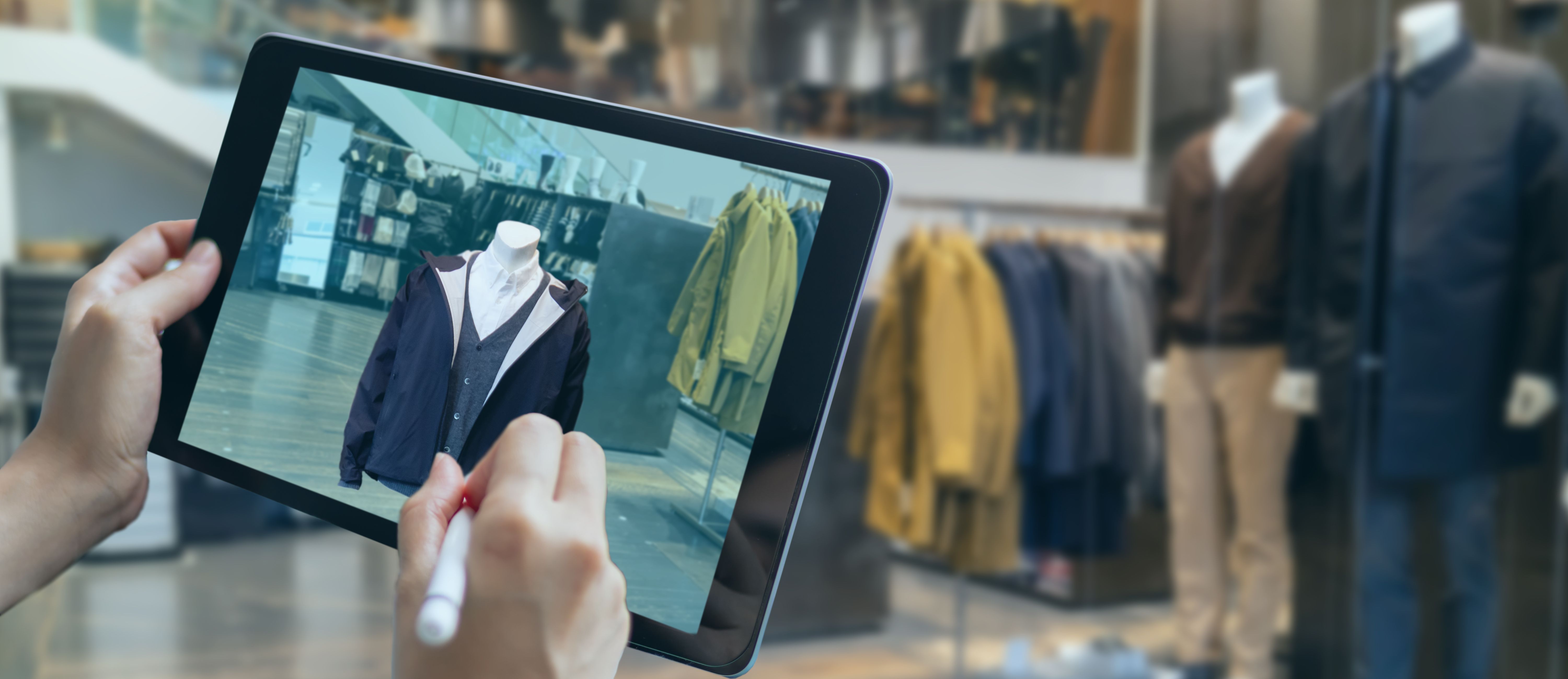The fashion retail industry has seen countless innovations over the years, but none have had quite the same impact as augmented and virtual reality. These modern technologies are revolutionizing the way businesses operate and creating new opportunities for shoppers to experience fashion in a more immersive and interactive way. AR and VR technologies are also transforming the retail landscape, providing companies with unprecedented opportunities to engage customers in innovative ways. In this blog post, we'll explore what augmented and virtual reality (VR) is. Also, we'll discuss how these technologies are changing the retail landscape, and some of the benefits that these technologies offer fashion retailers.
Experience a New Way of Shopping: Unlock the Benefits of AR & VR in the Fashion and Retail Industrybhu h
The fashion and retail industry is increasingly leveraging the power of augmented reality (AR) and virtual reality (VR) to provide customers with a more immersive shopping experience. Augmented and virtual reality technologies can be used to create an interactive, engaging, and personalized customer journey that can help to boost sales and increase store efficiency.
One of the key benefits of AR & VR in the fashion and retail industry is enhancing customer experience. By allowing customers to visualize themselves in front of a mirror or screen, they can get a better sense of how clothing looks on them before making a purchase decision.
Additionally, customers can use augmented and virtual reality to try on clothes without having to visit the store in person. This allows shoppers to save time while still getting the same level of satisfaction from their purchases. Furthermore, retailers are also able to use AR and VR for product customization, enabling customers to customize products according to their individual preferences.
Overall, augmented and virtual reality technologies have revolutionized the way people shop in the fashion and retail industry by providing customers with an enhanced shopping experience that is both convenient and enjoyable. By leveraging these technologies, retailers are able to increase efficiency while boosting sales at the same time.
6 Examples of Recent Successful Implementations of AR & VR in the Fashion and Retail Industry
The fashion and retail sectors have been utilizing AR and VR to expand possibilities for a while now. Let's dig into six incredible uses of these extended reality technologies!
Tommy Hilfiger
Tommy Hilfiger became the first fashion retailer to deploy virtual reality headsets in its stores, inviting shoppers to immerse themselves in a virtual runway show. This move allowed customers to experience the runway shows from the comfort of their own homes and provided a virtual shopping experience that was not otherwise possible.
The headsets showed the customers what it felt like to be walking down the actual catwalk and allowed them to view a 360-degree view of the show. Customers could get up close and personal with each look, zoom in and out, and browse through different collections on display.
Burberry
Burberry has applied AR in retail to allow customers to virtually try on makeup and accessories. This feature helps customers make informed choices about their purchases, as they can see how an item looks on them before making their decision.
The app also allows users to purchase items directly from within it, which helps boost sales for Burberry’s products as well as create more convenience for customers. Burberry’s AR technology has been successfully implemented in over 100 stores across Europe, North America, and Asia, demonstrating its effectiveness at driving customer engagement both online and offline.
Nike
Nike has used AR technology to let customers customize their shoes with different colors and patterns before they buy them. By using an app or QR code scanner, customers can select any number of Nike’s existing colorways or create their own unique combinations using a vast range of design options available through the app.
This way, customers get an exact picture of what their shoe will look like once it is customized according to their preferences – making for happier shoppers who are more likely to make a purchase!
ASOS
ASOS has implemented an AR feature that allows customers to visualize how clothes look on them without having to try them on physically. Customers simply point their devices at themselves or use selfies taken with the camera on their smartphone or tablet in order for this feature to work correctly.
This makes for a much more efficient shopping experience as people no longer need to waste time trying clothes on and only then decide against buying them; instead, ASOS’s tech allows potential buyers to make informed decisions quickly (and easily!).
Levi's
Levi’s has used VR technology to create a virtual store experience for its customers, allowing them to explore the store without ever needing to leave home!
Using special headsets such as Oculus Rift or Google Cardboard, Levi’s has created an immersive shopping environment where shoppers can navigate around different sections of the store and interact with products just as if they were really there –all while feeling comfortable in the knowledge that they are still safe at home!
Additionally, Levi's also developed features such as 3D product displays which offer details beyond what you would expect from conventional 2D photos found online.
Rebecca Minkoff
Rebecca Minkoff has utilized mobile-based augmented reality technology allowing users worldwide access her latest collections via her mobile app “See Now Buy Now."
With this platform shoppers get full information about pieces including prices when browsing around Rebecca Minkoff's store website by simply pointing their phone at merchandise tags placed along walls or mannequins. This makes it even easier than ever before to find styles perfect for you!
All these innovative uses of emerging technologies demonstrate how fashion & retail companies are taking advantage of digital tools available today & working hard towards staying ahead of the competition by providing exciting new experiences & opportunities for consumers worldwide!
Challenges Faced by the Fashion and Retail Industry When Incorporating AR & VR
The fashion and retail industry is increasingly exploring the use of AR and VR to revolutionize customer engagement. As these technologies become more prominent, fashion retailers must consider both the benefits and challenges associated with incorporating them into their businesses.
Cost Barriers
One major challenge for fashion retailers lies in the cost barriers associated with introducing AR and VR technologies. While the potential profits from such implementations are vast, the upfront investment costs can be high, especially for small or medium-sized retailers.
The need to purchase expensive hardware such as headsets and cameras combined with software development fees can make implementing AR & VR technology a costly endeavor.
Security and Privacy
Another challenge that fashion retailers face is ensuring security and privacy when incorporating augmented and virtual reality into their stores. With customers’ data being collected to provide a better shopping experience, companies need to ensure that secure channels are used for data transmission and storage.
Furthermore, there have been concerns raised about** how much information these technologies allow companies to access about their customers’ shopping habits and preferences. **To address this issue, retailers must ensure they adequately inform customers of any data collection taking place and implement necessary safeguards to protect this information from misuse or abuse.
Overall, while these technologies offer great opportunities for the fashion and retail industry, they also come with a range of obstacles that must be overcome for these technologies to reach their full potential. Businesses must weigh the various costs versus benefits of using such technologies carefully before making an investment decision.
Today, Vection Technologies provides you with comprehensive end-to-end solutions tailored to your specific needs as a fashion retailer. Our solutions enable customers to access your virtual showrooms, creating 3D product models that will be displayed on mobile phone screens and headsets, reducing costs related to making physical prototypes and samples.
Additionally, we can help you manage data security and offer you high scalability. By leveraging all our solutions and services, you can easily overcome cost barriers and security and privacy concerns. <u>Contact us</u> to adopt an extended reality solution for your fashion retail company now!
The Future of Augmented and Virtual Reality in the Fashion and Retail Industry
The future of augmented and virtual reality in the fashion and retail industry looks bright. With advances in technology, AR and VR have become more accessible for retailers, allowing them to offer innovative shopping solutions to their customers.
�
For example, retailers can use augmented and virtual realities to create 3D showrooms or 360-degree product tours that allow customers to virtually interact with products from any device. This allows shoppers to make more informed buying decisions without ever having to visit a physical store.
Extended reality technologies like these will enhance the shopping experience of customers and reduce manual labor costs associated with traditional in-store experiences. With these emerging technologies, the fashion and retail industry is sure to benefit from higher engagement with its consumers while reducing operational costs.
Conclusion
Retailers everywhere can revolutionize their operations and create an enhanced customer experience by harnessing the power of augmented and virtual reality.
Vection technologies provide a cost-effective solution to traditional models, making it easier for businesses to reach new heights. To find out more about how we can help you make this transformation, get in touch with us today!


